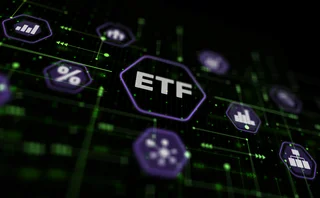Max Bowie: Does HFT ‘Debate’ Detract from True Tech Innovation?

As well as doing a wonderful job of generating its own publicity and notoriety, Flash Boys, Michael Lewis’ latest book, has also irked many industry participants—not for exposing them as evil millionaires bent on swindling granny out of her retirement, but for what they feel is a complete misrepresentation of high-frequency trading (HFT).
One IT executive at a small technology provider seethed at the way the “debate” has been presented, and was more than willing to explain why some HFT activity might look suspicious but is actually innocuous. Meanwhile, Nasdaq OMX CEO Bob Greifeld, speaking during a results call, tried to dump the phrase “HFT” altogether, referring instead to “high order-to-trade” trading—“HOTT” for short.
It’s clear that many still don’t understand HFT. I’ve heard it all: from an experienced investment professional insisting that it is front-running, to a senior exchange executive openly admitting to not knowing what HFT is.
I’m neutral on the benefits of HFT to the marketplace as a whole, but I don’t believe there’s anything illegal about it, and I’m far more concerned about the dangers of legislating progress. People have always speculated on short-term market movements. Now they can merely do it even shorter-term than ever before. That doesn’t mean the markets are rigged, just as co-locating in an exchange’s datacenter doesn’t mean you’re front-running ordinary investors. Buying the fastest servers and co-locating beside a matching engine is simply the modern day equivalent of firms on the exchange floor hiring the biggest, loudest traders to get a better chance of being filled. The only thing that’s changed is that machines now do tasks that people used to, just as they do at ATMs and on factory assembly lines.
Sure, banks and trading firms have millions to invest in the infrastructure to support HFT. But that in itself isn’t an unfair advantage; it’s only an unfair advantage if, assuming I have just as much to spend, the same advantages are withheld from me, such as through secret early disclosure of market-moving information to those paying a premium—the practice that New York Attorney General Eric Schneiderman has cracked down on, reaching agreements with Thomson Reuters, BlackRock and Business Wire to halt early information release programs.
I’ve heard it all: from an experienced investment professional insisting that HFT is front-running to a senior exchange executive openly admitting to not knowing what HFT is.
Paying a Premium for Content
In a seemingly similar vein, financial data service Seeking Alpha is mulling whether to make new analysis items available to professional clients 24 hours before making them available for free, as part of a project to break out some of its features as standalone services. However, Seeking Alpha likens this to any subscription website that makes premium content available to paying subscribers first, before making it freely available to all visitors to its website, such as The New York Times and Barron’s.
So if this practice isn’t new, what is? In fact, there’s plenty of new thought, if we’re willing to look for it. For example, Infinigon Group, a startup social media analytics provider set up by Belzberg Technologies founders Alicia and Sid Belzberg, has built a tool called Echo that they say delivers advance warnings of market-moving news by monitoring Twitter for mentions of a company or its products, services and executives.
Then there’s startup cloud “broker-in-a-box” platform provider Tradier, which has attracted $3 million in new funding from Devonshire Investors, primarily to accelerate development of its application programming interface (API) and to encourage more third-party developers to build apps on top of its cloud platform.
Finally, Direct Edge, whose program of attributing orders—introduced last year—has resulted in 18 percent more executions than equivalent unattributed orders, is now allowing approved firms to designate their orders as “retail” flow rather than having to fully identify themselves. This, once order-by-order attribution choice rolls out, should improve fill rates and protect firms against market impact.
So, do you want to spend hours watching others debate the merits of HFT, or would you prefer to meet the people building the technologies that will be around long after the HFT debate is over?
Only users who have a paid subscription or are part of a corporate subscription are able to print or copy content.
To access these options, along with all other subscription benefits, please contact info@waterstechnology.com or view our subscription options here: http://subscriptions.waterstechnology.com/subscribe
You are currently unable to print this content. Please contact info@waterstechnology.com to find out more.
You are currently unable to copy this content. Please contact info@waterstechnology.com to find out more.
Copyright Infopro Digital Limited. All rights reserved.
You may share this content using our article tools. Printing this content is for the sole use of the Authorised User (named subscriber), as outlined in our terms and conditions - https://www.infopro-insight.com/terms-conditions/insight-subscriptions/
If you would like to purchase additional rights please email info@waterstechnology.com
Copyright Infopro Digital Limited. All rights reserved.
You may share this content using our article tools. Copying this content is for the sole use of the Authorised User (named subscriber), as outlined in our terms and conditions - https://www.infopro-insight.com/terms-conditions/insight-subscriptions/
If you would like to purchase additional rights please email info@waterstechnology.com
More on Trading Tech
Symphony boosts Cloud9 voice offerings with AI
The messaging and collaboration platform builds on Cloud9’s capabilities as it embraces the AI wave in what CEO Brad Levy calls “incremental” steps.
Can exchanges leverage new tech to claw back ETF share from RFQ platforms?
Systematic trading strategies and proliferating data are bringing efficiency to an otherwise-fragmented European ETF market.
Nasdaq reshuffles tech divisions post-Adenza
Adenza is now fully integrated into the exchange operator’s ecosystem, bringing opportunities for new business and a fresh perspective on how fintech fits into its strategy.
Liquidnet sees electronic future for gray bond trading
TP Icap’s gray market bond trading unit has more than doubled transactions in the first quarter of 2024.
This Week: HKEx's new derivatives platform; GoldenSource; Quonian-SimCorp, and more
A summary of some of the latest financial technology news.
Chris Edmonds takes the reins at ICE Fixed Income and Data Services
Edmonds is now leading ICE’s fixed income and data business as the rush to provide better data and analytics in fixed income builds.
Systematic tools gain favor in fixed income
Automation is enabling systematic strategies in fixed income that were previously reserved for equities trading. The tech gap between the two may be closing, but differences remain.
Waters Wrap: Examining the changing EMS landscape
After LSEG’s decision to sunset Redi, Anthony examines what might lie ahead for the EMS space.
Most read
- Chris Edmonds takes the reins at ICE Fixed Income and Data Services
- Deutsche Börse democratizes data with Marketplace offering
- Waters Wavelength Podcast: Broadridge’s Joseph Lo on GPTs








